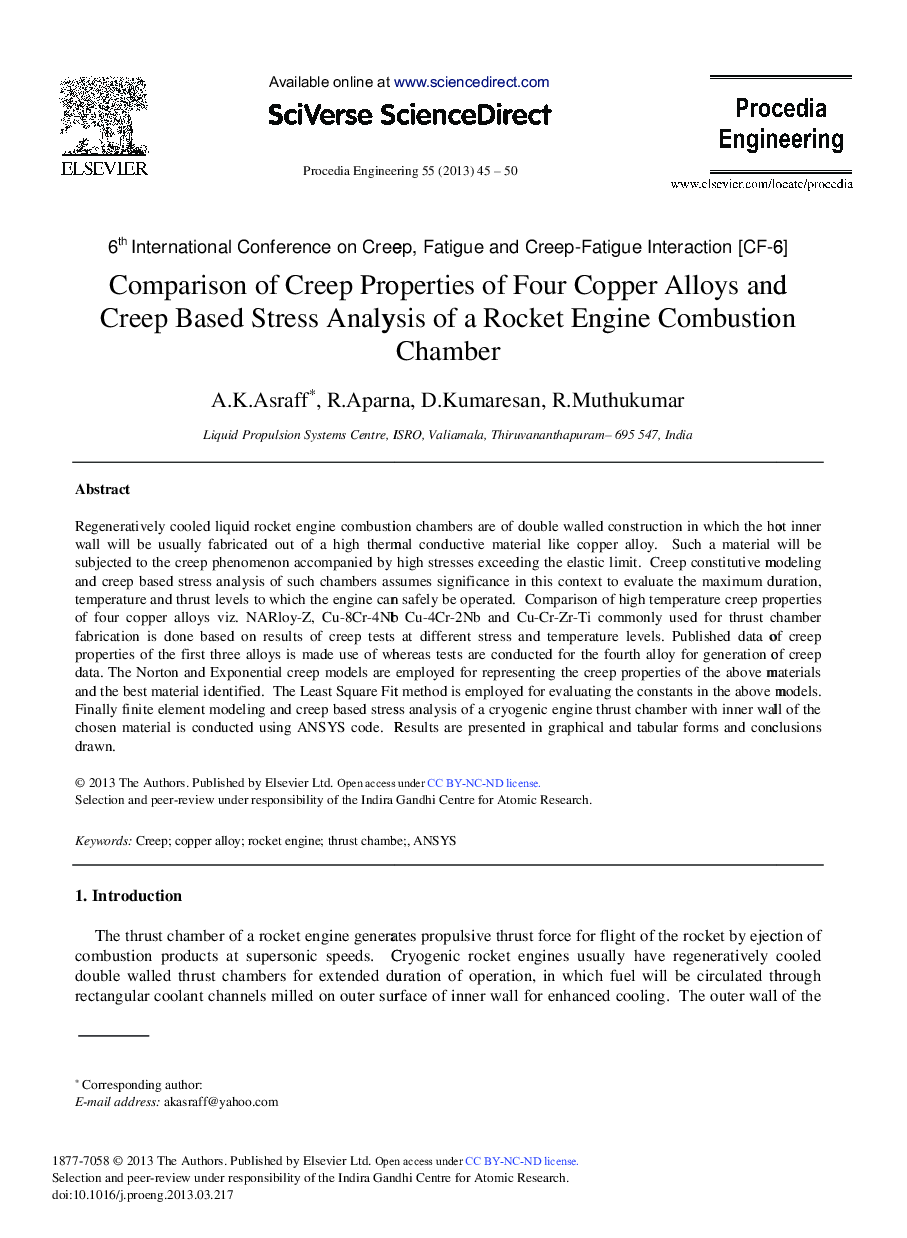| Article ID | Journal | Published Year | Pages | File Type |
|---|---|---|---|---|
| 860455 | Procedia Engineering | 2013 | 6 Pages |
Regeneratively cooled liquid rocket engine combustion chambers are of double walled construction in which the hot inner wall will be usually fabricated out of a high thermal conductive material like copper alloy. Such a material will be subjected to the creep phenomenon accompanied by high stresses exceeding the elastic limit. Creep constitutive modeling and creep based stress analysis of such chambers assumes significance in this context to evaluate the maximum duration, temperature and thrust levels to which the engine can safely be operated. Comparison of high temperature creep properties of four copper alloys viz. NARloy-Z, Cu-8Cr-4Nb Cu-4Cr-2Nb and Cu-Cr-Zr-Ti commonly used for thrust chamber fabrication is done based on results of creep tests at different stress and temperature levels. Published data of creep properties of the first three alloys is made use of whereas tests are conducted for the fourth alloy for generation of creep data. The Norton and Exponential creep models are employed for representing the creep properties of the above materials and the best material identified. The Least Square Fit method is employed for evaluating the constants in the above models. Finally finite element modeling and creep based stress analysis of a cryogenic engine thrust chamber with inner wall of the chosen material is conducted using ANSYS code.drawn. Results are presented in graphical and tabular forms and conclusions
